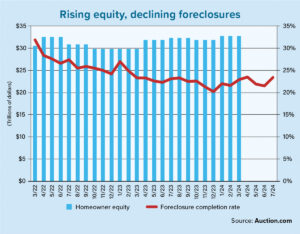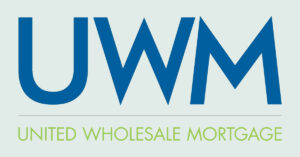Despite new technologies and increased automation in most areas of consumer banking, the majority of mortgage lenders continue to operate the same way they always have. From application to closing, the mortgage process is marked by paperwork, paperwork and more paperwork.
For the financial institution, the process is far from efficient. For the borrower, this process is downright painful. It’s not only labor-intensive, with requests for multiple pieces of information that the borrower may or may not have readily available, but it is a time of great anxiety. The borrower knows that at any time the loan could fall through. Furthermore, borrowers may be forced to provide the same information and documents at multiple points to compensate for the institution’s lack of internal communications and shared systems.
In today’s competitive environment, financial institutions cannot expect to transform their business by improving internal processes alone. Modern consumers expect their banking experience to match the experiences they take for granted in other areas of their lives. Because of the instant gratification of online shopping and entertainment options, as well as the always-on user experiences offered by mobile devices, the old ways no longer cut it. And online-only lenders are threatening to take increasingly larger slices of the community lender’s mortgage business.
Heightened expectations
A 2016 Zillow study showed that borrowers spend seven to nine hours researching mortgages online before they buy a home. This is true for millennials, Generation X and baby boomers. Mortgage lenders need to have an attractive and functional online presence to serve these prospects or risk losing them to a financial institution that meets their expectations.
Many financial institutions make the mistake of forcing their traditional website to double as a mobile site. Borrowers don’t want to pinch or move around a browser screen on their phone in order to learn about rates, fees and application processes. They definitely don’t want to see a pop-up telling them they’re leaving the financial institution’s website and being sent to a site they’ve never heard of. Redirecting borrowers to an unknown site erodes the sense of trust and personalized service that attracted them to the business in the first place.
Borrowers want websites with a clean look, intuitive navigation and the ability to access full information about all products and services. When applying for a loan, they expect the same speed and convenience they can get from an online-only bank.
To give a sense of the discrepancy that needs to be addressed, many online banks can approve or deny a loan application in about 30 seconds. Reaching a decision this quickly would be a difficult goal for most credit unions, community banks or other types of mortgage lenders if they were to develop this technology in-house because progress would be hindered by nonintegrated legacy systems and functionality. Help is out there, however, and the real challenge isn’t in development but in choosing a technology partner that is the right fit for a mortgage company’s priorities, budget and time frame.
There’s an intense demand for instant communication, which isn’t possible with human-driven processes.
Skillful execution
If location is the key factor in real estate, execution is key to a successful online borrower experience. Executed poorly, the online research phase or online application leads to headaches for the client and the mortgage company. It can cost time and money for the prospective homebuyer, while the lender and originator may ultimately see a reduction in their business.
On the flipside, good market data — as well as an application with data that populates across multiple banking channels — means fewer errors, a faster and more efficient process, and the ability to process a higher volume of loans. Mortgage industry pundit David Lykken estimates that each lender should aim to shorten their internal processes so that it takes no more than 22 days from application to funding to compete in today’s market. The right mortgage automation technology can make this possible.
An ever-growing share of account holders are managing their banking relationships without ever interacting with a human. There’s an intense demand for instant communication, which isn’t possible with human-driven processes. There will always be phone trees, hold times and nonbusiness hours. Automation, however, makes it possible to always be open and ready to engage with a borrower, and to always be able to provide the right offer to the right person at the right time.
Looking further ahead, conversational artificial intelligence (AI) will be the future of mortgage lending. Several banks, both large and small, have already partnered with technology providers to bring this feature to life. Accessed through a website or mobile app, conversational AI enables a credit union, community bank or other type of mortgage lender to connect with borrowers around the clock and answer their questions in real time. The AI system will sound as natural as a human and ask questions in a way that establishes trust. Hot leads can automatically be forwarded to the first available loan officer.
Superior experience
Despite the promise for improved operational efficiencies and happier homebuyers — as well as an ability to increase their business to remain competitive with online lenders — banks, credit unions and mortgage companies have largely resisted automating and digitizing the loan process. The reason is understandable: Regulatory compliance continues to evolve in the home lending industry, keeping financial institutions on their toes.
A well-executed online experience that is seamlessly integrated between front-end tools and back-end processes — and is coupled with relevant education — provides an effective channel for borrowers that differentiates a business’s value proposition. Technology can help streamline the loan process by minimizing turn times, handoffs, manual data entry and duplicate entries. Combined with automated workflows, a lender can deliver a better borrower experience and grow its mortgage portfolio.
Lenders and originators who automate the mortgage process are already seeing results. Internally, processes have become simplified and more efficient. Staff have more time to drive growth and service more prospective borrowers while being freed from mundane data entry and other manual tasks. Borrowers are benefiting from a quick and stress-free home-financing experience.
Flexibility and customization are key value differentiators for mortgage lenders and originators. These financial institutions can use automation and self-service to further their unique ability to tailor products and services to a focused base of prospective borrowers. The companies that are able to shake the status quo by reducing costs and increasing volume will find abundant opportunities to gain market share. They also can expect to better compete in a financial landscape characterized by technological disruption.
Author
-
Steve Hoke is vice president and general manager for mortgage and commercial lending solutions at Finastra. With more than 20 years in the financial-services industry, Hoke brings to his role a wealth of experience in fintech, insurance, lending and investment banking. His background allows him to lead a strategic product team focused on improving the lending experience for homebuyers and businesses across the country.




